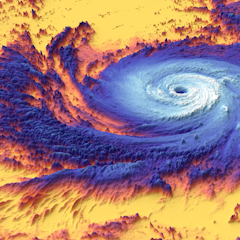
Articles on Typhoons
Displaying all articles

It may soon be possible to reduce cyclone formation and intensity by spraying particles into the atmosphere above a forming storm. But the technology opens up a can of worms

Currents can carry that deep ocean heat hundreds of miles to surface again at distant shores.

Olympic surfers are coming from around the world to compete in surfing’s Olympic debut. But where will the waves come from?

Months after Typhoon Washi tore through the Philippines in 2011, relocated residents were moving into newly built housing. They soon began modifying and extending homes that didn’t meet their needs.

The Haiyan Typhoon disaster is a cautionary case for climate adaptation and mitigation because it demonstrates the seductiveness of survival myths.

The Mekong Delta is gradually being washed away, as less sediment is delivered downstream.

Moaning about weather forecasts is almost an Australian national pastime. But weather predictions have improved a lot, and with a new satellite and supercomputer, they are about to get even more reliable.

What happens beneath the surface before a volcano erupts? Can we predict when one will blow? And how can typhoons and melting glaciers contribute to big eruptions?

New analysis shows that warmer ocean temperatures in the Pacific are creating more intense typhoons.
Aerosols produced by human activity may weaken the strength of cyclones and tropical cyclones, contrary to what scientists…

Following typhoon Haiyan, the Philippines’ Department for Environment and Natural Resources has earmarked around US$8m to fund efforts to replant much of the affected coastal zone with mangrove forests…

Even before Typhoon Haiyan struck the Philippines with such devastating force, weather watchers around the world had been tracking this year’s typhoon season with intense interest. Typhoon Haiyan has been…

The rain is ricocheting off the roads here in Manila. Early on Friday, our car’s tyres dragged in the deep puddles. Basketball courts - remnants of bygone American rule, and a staple of every district…

With sustained winds of more than 310 km/h, or 195 mph, as it approached the Philippines, Super Typhoon Haiyan has hit land in the past few hours with terrifying force. This makes it the strongest tropical…

Typhoon Soulik struck Taiwan at the beginning of the weekend, killing two people before moving on into Guangdong in southern China, where 300,000 people have already been evacuated. Classed as a category…
